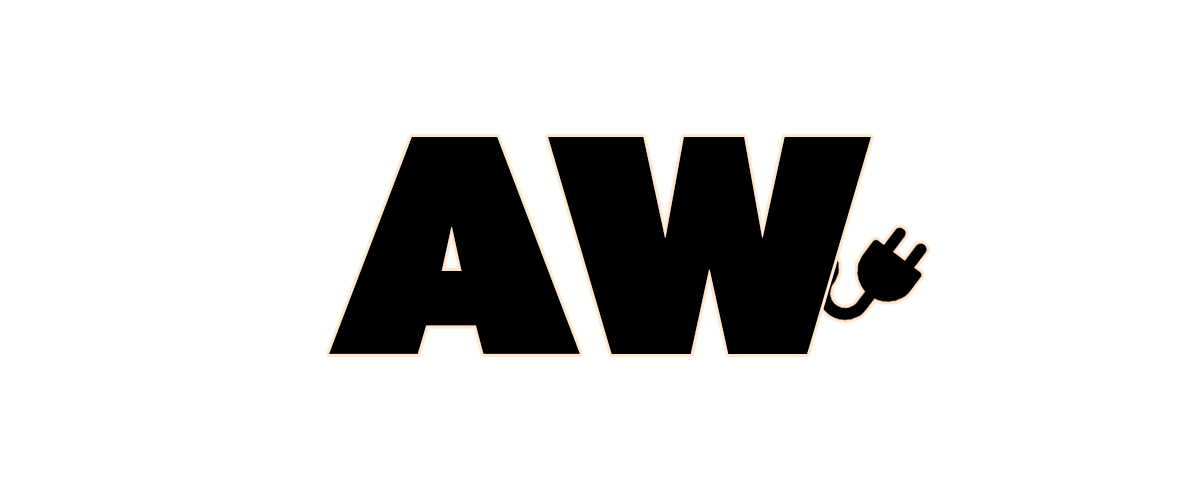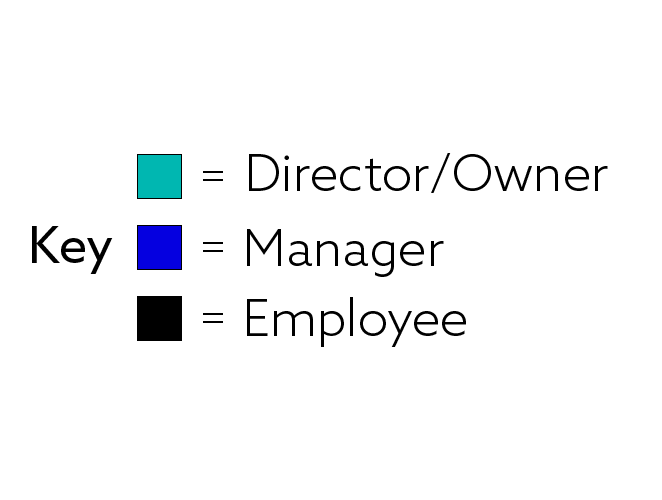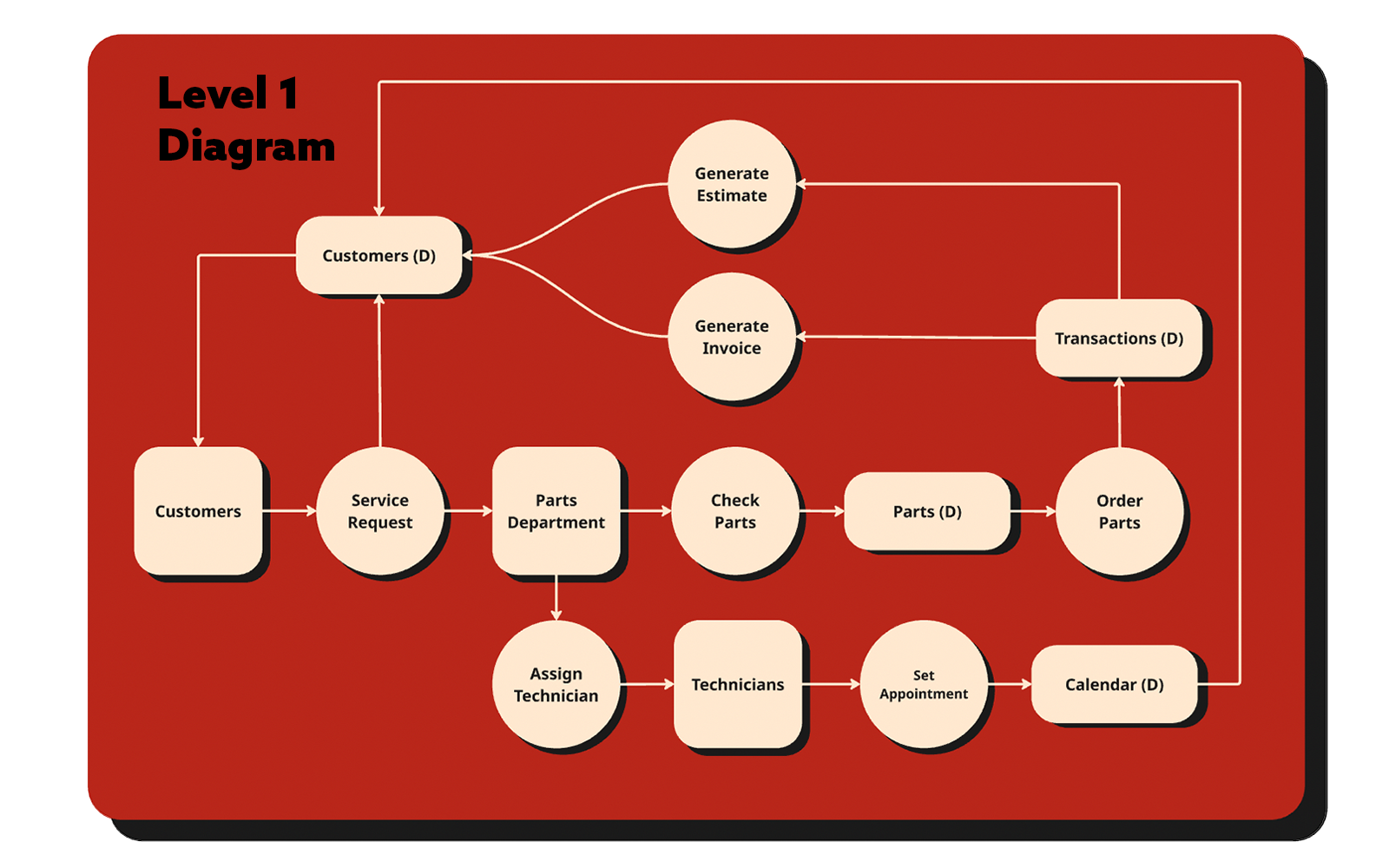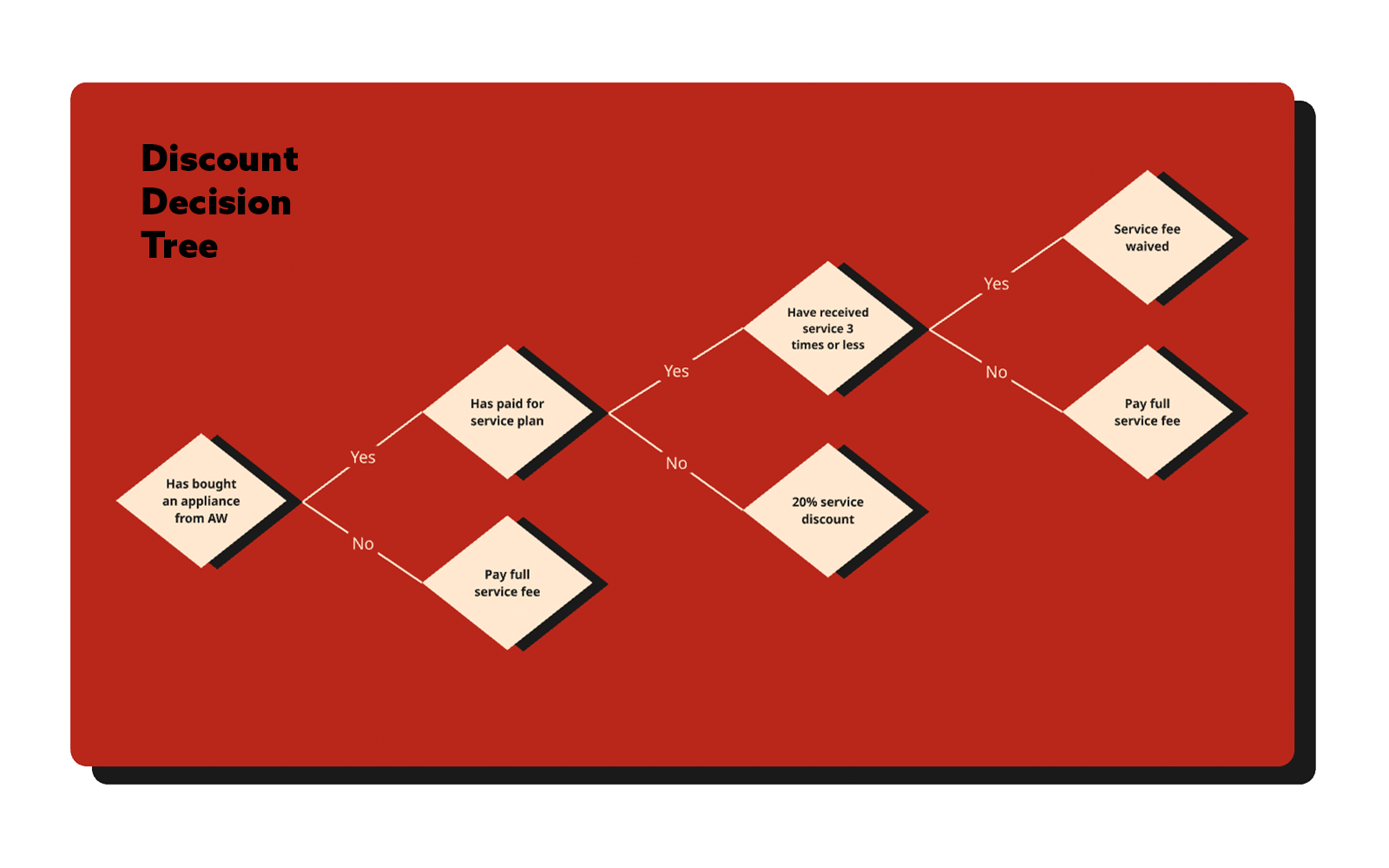The Problem Set
Working to become a home appliance one-stop shop for the local region, Appliance Warehouse is aiming to offer the full gamut of appliances, parts, and repair services. However, the repair service arm of the business is currently outsourced to a third party company. With sales at an all-time high, management has decided to bring repair services in-house to improve efficiency and reduce cost. They are in need of a system solution that will facilitate the scaling of operations.
In designing an effective service system I needed a foundational understanding of the stakeholders who will be impacted by it and how it will fit into the broader organization. For this, I identified relevant departments and roles within the company through developing organizational charts. I then designed interview questions meant to gain a more informed perspective on what these stakeholders would require from the system.
1. What are your primary responsibilities in the service department?
2. Can you describe the typical process for handling a service request from a customer?
3. How do you currently track service orders or repairs (e.g., software, paper forms, verbal updates)?
4. What are the most common issues or delays you face when servicing customer appliances?
5. Where do you see the most opportunities to improve the current service system?
1. What are your main responsibilities in the parts department?
2. Can you walk us through the typical process for ordering, receiving, and stocking parts?
3. How do you currently track part availability and usage?
4. What information would make it easier for you to fulfill part requests efficiently?
5. What ideas do you have for improving coordination between parts, service, and sales?
1. What are your primary responsibilities within the administration and/or IT department?
2. How do you monitor and measure the performance of service-related systems and workflows?
3. How is access to service-related systems managed across departments? Are there any challenges in permissions, roles, or data silos?
4. What are the most common service or system-related support requests you receive from frontline staff?
5. If we were to build or redesign a service system from the ground up, what capabilities or features would be critical from your perspective?
The Scope
To begin the process of designing a system solution it was essential for me to establish the scope of its development. Performing an initial SWOT analysis helped me identify certain opportunities, risks, and milestones for the project.
Strengths
Broad Appliance Inventory: Wide selection of appliances from major brands, meeting diverse customer needs.
Strong Customer Relationships: Trusted local reputation and repeat business from residential and light commercial clients.
Solid Vendor Partnerships: Strong supplier relationships for appliances and parts procurement.
Weaknesses
No In-House Service Capability: Reliance on third-party technicians can lead to inconsistent service quality and slower issue resolution.
Limited Control Over Post-Sale Customer Experience: Service complaints or delays may hurt brand trust, even if caused by outside partners.
Disconnected Post-Sale Support: Lack of centralized system for tracking installations, issues, or service status.
Opportunities
Launch In-House Repair Services: Build a service department to increase revenue, control, and customer satisfaction.
Cross-Departmental System Integration: Implement tools for seamless coordination between sales, service, and parts.
Create End-to-End Service Ecosystem: From sale to service, improve customer lifetime value and retention.
Threats
Third-Party Service Quality Risk: Continued reliance on external partners could erode brand loyalty if service or security issues arise.
Competitor Innovation: Larger chains may already offer integrated service models, creating pressure to modernize.
Customer Expectations for Seamless Support: Without a cohesive service system, customer dissatisfaction may increase.
The information gathered from the SWOT analysis and department interview questions provided a foundation for me to discern the requirements of the new service system, as well as the tasks involved in its development. Next, I developed a timeline mapping out an estimate of how long each phase of the project would take.
The System
To better communicate the processes and capabilities of the service system I developed a comprehensive breakdown including data flow and entity relationship diagrams illustrating the system’s functional architecture, and a decision tree mapping key escalation points based on customer characteristics.
THE ROLLOUT
Testing
Having a plan for testing the new service system is an essential stage in the lead up to a full launch. Testing the system with the stakeholders who will be using it allows for feedback to be collected and bugs to be fixed. Lowering the risk of any type of system failure. Examples of pertinent questions to be answered through testing are as follows:
1. Do stakeholders find the UI and functionality of the system to be clear and easy to understand?
2. For those who schedule appointments, do they find the process of managing the calendar to be seamless?
3. Is the system accessible from different types of devices concurrently. Does the UI adapt to these different devices correctly?
4. Are technicians and appointment setters able to handle several users at once? How fast are they notified of new service requests?
5. Is it reasonably straight forward for administrators to access records of previous appointments?
Training
The final stage of the rollout for the service system recommendation is the on-boarding training of the various departments who will be using it. Having documentation explaining how these departments are intended to use the system to complete their daily tasks and responsibilities is integral to a successful rollout. In support of this I have included information to that effect below.
Appointment Setters:
Appointment setters within the parts department will be responsible for the administration of appointments within the calendar in accordance with technician and parts availability. They will ensure that the calendar database is up to date with technician and parts availability as well as service request data. In the event a technician is not available, other technicians will be considered. If no technicians are available for a specific date, then the appointment will be pushed back until there is an available technician.
Upon creation of the appointment the calendar will update for technicians as well. If a specific part is needed to complete a service request, then the appointment setter will refer to the parts inventory to see if the part is in stock. If the part is not in stock, then the parts department is charged with ordering the part and the appointment will be postponed until the part arrives.
Technicians:
Technicians will be responsible for completing service requests via the appointment screen connected to the calendar database. They will use the calendar to check the bi-weekly schedule that management has put together based on their availability. This is the same schedule that the system will take into consideration when making appointments.
When an appointment is created, it will include the date and time of the appointment, the model number of the appliance in need of service, and any parts needed for the servicing. It will also include the customer's information.
Management:
Management is responsible for building the schedules for the company employees, but more specifically the technicians. When management has concluded which technicians will be working when, they will input that schedule into the calendar database.
Parts Department:
The parts department will be responsible for maintaining the parts inventory and generating invoices via the invoices database. If parts are needed for a service request, the parts department checks to see if the part is in stock through the parts database, and if it’s not, will move forward with ordering the part through the part order database so the service request can be completed at a later date.
Before a service request is finalized, the parts department will generate an estimate of the cost of the service request that is shown to the customer. If the customer accepts the projected cost, the service request is finalized and a technician is assigned to the service appointment through the calendar database.











